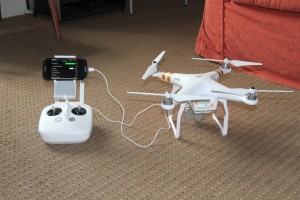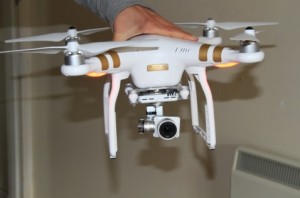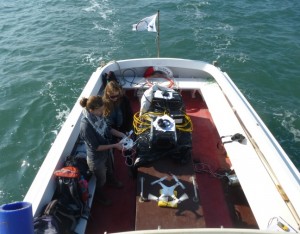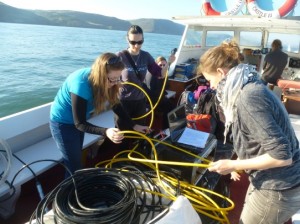Sea Watch is a national charity whose prime purpose is to monitor cetaceans (whales, dolphins and porpoises) in British and Irish waters for their conservation. We have a project called the Cardigan Bay Monitoring Project which is run from the base we have in New Quay, Ceredigion. On behalf of Natural Resources Wales, we work to conserve the bottlenose dolphin, harbour porpoise and Atlantic grey seal populations that inhabit Cardigan Bay, particularly within the two Special Areas of Conservation (SACs) that we have in the bay: the Pen Llyn a’r Sarnau SAC in the north and the Cardigan Bay SAC in the south. Cardigan Bay provides an ideal habitat for the rearing of young, along with important feeding areas for the dolphins, porpoises and grey seals. The team at Sea Watch focuses research particularly on the semi-resident bottlenose dolphin population comprising between two and three hundred individuals. Using a combination of photo-identification, boat-based line transect surveys, acoustics and land-based surveys the team collects important information on the dolphins. These techniques allow us to build up a picture of the local environment as well as allowing us to understand aspects of the abundance, distribution, reproductive success, and social relationships of the bottlenose dolphins.

Recent survey using DSLR cameras and a GoPro to get footage of the bottlenose dolphins in Cardigan Bay
To obtain the data that we need about the dolphins, the Sea Watch team primarily use a combination of DSLR cameras, video cameras and GoPro’s, the latter operated close to or below the surface to identify individuals and, where possible, determine their gender. The team are always looking for new technologies to make marine mammals more accessible for research and monitoring. So, this August, Sea Watch Foundation were very pleased to receive a grant of £9,500 from Environment Wales to buy some special equipment that would dramatically help the team to closely study the dolphins, porpoises and grey seals within Cardigan Bay. Two such technologies that have seen major new developments in recent years include an aerial camera drone and a towed stereo hydrophone.
Aerial camera drones have become much cheaper in recent times and have also become a lot easier to use for filming animals from the air. Using the drone to film the animals allows us to photo-identify individuals and study group structure and behaviour more closely with minimal disturbance. With the grant given to us, Sea Watch has bought a DJI Phantom 3, which the Sea Watch team has nicknamed ‘Shark Bait’ from the Disney Pixar film ‘Finding Nemo’. As previously stated, during its surveys, Sea Watch routinely attempts to estimate group sizes and group composition of dolphins and other cetacean species, and on occasions to attempt to determine the spacing between individuals. For those species that have individual markings (e.g. bottlenose dolphin) on their dorsal fins, we take photographs for individual recognition. Identifying them through nicks, notches, scratches and discolouration that the dolphins have accumulated over time. Frequently, some individuals are easier to photograph and study than others as they are more confiding. So it is hard to make sure that every dolphin within an encounter has been photographed. From a boat it is also very difficult to understand exactly what the dolphins are doing when there is a lot of movement in the water. Are they socialising, feeding, or showing sexual or aggressive behaviour? With a relatively low eye-line view to the action, most of the time we cannot see exactly what is happening, what their behaviour is and how individuals relate to each other. The drone allows Sea Watch to approach the animals from above providing better understanding of their behaviour, social structure and interactions in a way that is often impossible from a boat.
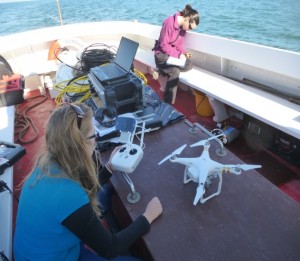
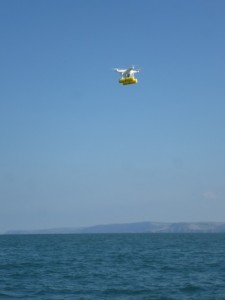
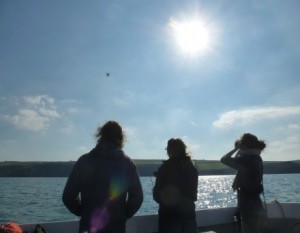 After several land trials, the team took “Shark Bait” out for its first spin overwater to get to grips with it whilst on the boat. We had a good-sized pod of dolphins between Aberporth and Mwnt consisting of five adults and three calves. Although the footage we obtained of the dolphins was not wonderful quality it gave us a good understanding of how we can use the drone over the dolphins and its potential in assisting our research within the Cardigan Bay Monitoring Project. Being able to take both still images and video footage also allows us to photograph the fins and film behaviour so that we can study it more easily. Click here for video footage taken of our first flight with “Shark Bait” whilst at sea.
After several land trials, the team took “Shark Bait” out for its first spin overwater to get to grips with it whilst on the boat. We had a good-sized pod of dolphins between Aberporth and Mwnt consisting of five adults and three calves. Although the footage we obtained of the dolphins was not wonderful quality it gave us a good understanding of how we can use the drone over the dolphins and its potential in assisting our research within the Cardigan Bay Monitoring Project. Being able to take both still images and video footage also allows us to photograph the fins and film behaviour so that we can study it more easily. Click here for video footage taken of our first flight with “Shark Bait” whilst at sea.
As mentioned earlier, the SAC’s are in place to help conserve not just the bottlenose dolphins but also harbour porpoise and grey seals. Additionally, on many surveys, we find that a dolphin group that we encounter can seemingly disappear, and although we cannot see them, we know they must still be in the area. Sea Watch currently owns a hydrophone that can be dipped into the water to record dolphin whistles when they are close to the boat, once the boat is stationary. This type of hydrophone cannot be towed and lacks a pre-amplifier for detecting animals at any distance from the survey vessel. This is a particular problem when we want to record harbour porpoise as well as the ‘disappearing’ bottlenose dolphins.
Harbour porpoise are typically cryptic animals that surface only briefly and tend to avoid noise and large obstacles e.g. boats in their vicinity. When encountered, they are usually seen individually or in small groups and for a few seconds at a time before disappearing again. Since they are the smallest of the cetaceans that inhabit British waters, they can be particularly hard to detect during boat surveys.
The new stereo towed hydrophone bought with the grant from Environment Wales has a built-in array for providing directionality so that the locations of individual vocalisations can be identified. It can also be left to record and store information over a period of time whilst the boat is moving so that it can be downloaded and analysed at a later date. This allows the team to tow the hydrophone along transects within Cardigan Bay so that they can accurately locate the presence of dolphins and particularly harbour porpoise within the bay without needing to see them. Recording the number of clicks and whistles then gives us an idea of what the animals are doing at the time that we located them.
Thanks to Environment Wales, these two new pieces of equipment will really enhance the data that Sea Watch collects, producing much more information which improves monitoring and thus helps to inform decision on conserving the dolphins, porpoises and Atlantic grey seals within Cardigan Bay.

